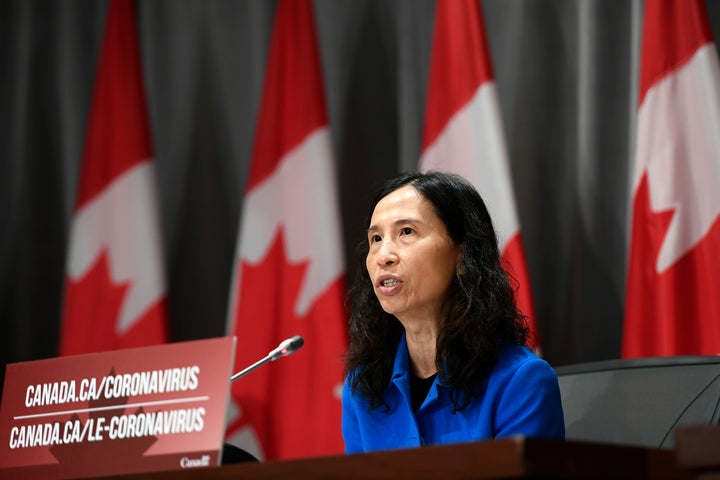
Canada’s health officials are reminding protesters that it’s their right to demonstrate, but they should keep in mind that there’s still the ongoing COVID-19 pandemic.
Demonstrations sparked across the United States last week in response to the police killing of George Floyd in Minneapolis, and ongoing anti-Black racism and police brutality there. Solidarity actions across Canada drew thousands of marchers this weekend from Montreal to Vancouver, and images of mask-clad people tightly packed into streets and public squares flooded social media.
On Monday, B.C. chief medical officer Dr. Bonnie Henry offered some advice for staying safe and healthy while peacefully demonstrating.
WATCH: Protesters rally against anti-Black racism in Toronto. Story continues below.
“In terms of these demonstrations, I cannot control people’s activities,” Henry said. “What I can do is provide you with the necessary advice and tools you need to have a peaceful demonstration in a way that is not going to imperil your family, your loved ones, your community during this time, during this pandemic.”
Henry said to wear a mask, bring hand sanitizer and try to maintain at least two metres between yourself and others.
She stressed that racialized and Indigenous communities are some of the people at highest risk of “devastating” impacts from COVID-19, and it’s important that protesters take care when out in groups.
While racial data around confirmed COVID-19 cases in Canada has not been made public, in the U.S. Black people are four times more likely to die from coronavirus than white people.
“So out of respect for them, we must be careful in how we exercise our right to peaceful demonstration. I saw many people wearing masks and keeping their safe distance [Sunday] and for that I thank you,” she said. “And I encourage anyone who may be demonstrating to also please continue to keep that safe distance.”
Henry’s comments echo a similar one from Canada’s chief medical officer Dr. Theresa Tam.
In a Twitter thread Monday, Tam noted that the safest type of protest is online.
But if you are going to go out, it’s important to bring a mask and hand sanitizer, and actively work to prevent the spread of the virus, she tweeted.
During a press conference Monday, Tam noted that chanting, singing and shouting — common at protests — poses a greater risk of spreading respiratory droplets. She encouraged people to “sign, not shout.”
“Wearing a mask is important, but shouting and making very loud projections can increase the risk,” she said. “So one might want to choose other means of messaging, whether that be signage or making noise using other instruments. Just to consider that shouting and that type of behaviour can potentially project more droplets.”
“I encourage anyone who may be demonstrating to also please continue to keep that safe distance.”
- Dr. Bonnie Henry
Tam said protests are about solidarity, and preventing the spread of COVID-19 is, too.
“Be considerate of others. People are out to protest, to support a common goal. So I think being respectful and kind to each other participating by wearing a mask and doing the right public health measures is really key,” she said.
Henry assured people the physical distancing won’t impact the value of their messaging.
“Your message can still be heard, no matter how far apart you stand.”
Also on HuffPost: